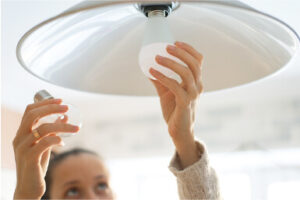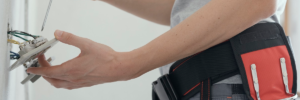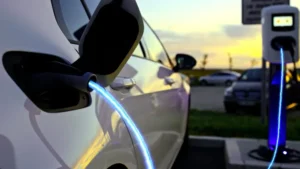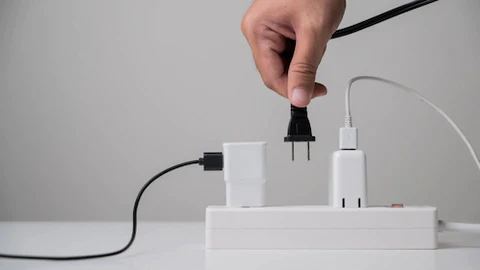
Introduction:
If, like most people, you need to power more than one electrical device at a time, use a power strip. Power strips, also known as outlets, are power strips that can power multiple devices. Unfortunately, many people do not know how to use power strips properly and are unaware that they can be extremely dangerous if used improperly. If you have power strips in your home or office, here are basic safety guidelines for the proper use of these products, along with some warnings on how not to use them.
How to Use Power Strips
- To avoid the risk of fire, only use power strips with circuit breakers.
- Limit their use to only low-voltage electronic devices such as computers, small clocks, and lamps.
- Plug power strips into permanently installed sockets.
- Keep your power strips in a dry environment as electricity and water don’t mix. To do this, you need to make sure that your power strips are not near water or any other liquid.
Basic Power Strips Don’ts
- Never use power strips for applications that require heavy loads, including heaters, refrigerators, store fixtures, microwave ovens, and other appliances.
- Do not use them in applications that require constant loads.
- Avoid using power strips in applications or facilities such as B. Healthcare where power supply is critical.
- Never use power strips outdoors, especially in wet weather. Power strips used outdoors are not only exposed to moisture, but also to insects, dirt, debris, and other elements that can get into unused ports and cause a failure.
- Do not chain power strips in series. This is the connection of power strips to other power strips or extension cords, which can cause overloading, damaged equipment, or even a fire.
- Never pierce or staple power strips to assemble. Always use proper assembly methods, including tabs or hooks that are often molded into power strip housings.
Power Strips vs. Surge Protectors
People often confuse power strips with surge protectors, but they are not the same even though they look the same. While a power strip is just an extension cord with multiple outlets, a surge protector contains an extra element that sits inside. This item is designed to limit power surges, which means it can eliminate power surges, protecting a flat screen TV, computer, stereo or other electronic device from voltage irregularities or power surges. Surge protectors provide additional safety and protection and are a good idea for current-sensitive applications.
Other Considerations and Warnings
- Some power strips have a push button that automatically triggers when a power strip gets too hot to be used safely.
- Power strips are not intended as a permanent replacement for an electrical outlet.
- Power strips should not be routed through ceilings, floors, walls, or other openings.
- If a power strip feels hot, quickly unplug it.
- Immediately dispose of any cords that are damaged, such as cracks, exposed wires, or splices.
- Check your power strips for kinked or coiled cords. Note that the cord of a power strip should remain straight during use.
- Always use the correct power strips. Before purchasing a particular product, make sure that it is UL (Underwriters Laboratory) certified and meets safety standards.
- Ensure that a power strip with a long cord does not present a tripping hazard, as a power strip cord should not be longer than 6 feet.
- Do not place a rug over a power strip as this could potentially break the wires in the cord. These wires can become hot, which can result in a smoldering fire. Since it usually happens at night, this situation is extremely dangerous.
- If your garage doesn’t have air conditioning, you’ll need to have a hardwired power strip installed by a professional electrician.
FAQs about the basic safety guidelines for using Power Strips:
Q: What are power strips?
A: Power strips are electrical devices that allow you to plug multiple devices into one outlet. They are a convenient way to power a lot of devices in a small space, but they can also be a fire hazard if not used properly.
Q: What are the signs of a damaged power strip?
A: Here are some signs of a damaged power strip:
- The power strip feels hot to the touch.
- There are visible cracks or tears in the power strip.
- The power strip is emitting a burning smell.
- The power strip is not working properly.
Q: What should I do if I have a damaged power strip?
A: If you have a damaged power strip, you should unplug it immediately and dispose of it properly. Do not try to repair the power strip yourself.
Q: How can I prevent electrical hazards from power strips?
A: Here are some things you can do to prevent electrical hazards from power strips:
- Use only UL-listed power strips.
- Do not overload power strips.
- Do not plug a power strip into another power strip or extension cord.
- Do not use a power strip if it is damaged or frayed.
- Keep power strips away from water and moisture.
- Unplug power strips when not in use.
Installation of additional outlets and other electrical work should only be performed by a highly qualified, experienced, and licensed electrician. In addition, electrical inspectors are trained in the proper use of power strips and can point out electrical hazards that result from their misuse.
If you need help powering your home or office, call Poss Electric. Our company has a proven track record of serving homes in the greater Woodstock, GA area and has extensive experience in product compatibility for our hot desert climate. And don’t hesitate to contact us with any questions or to find out about the prices of our wide range of electrical services.
